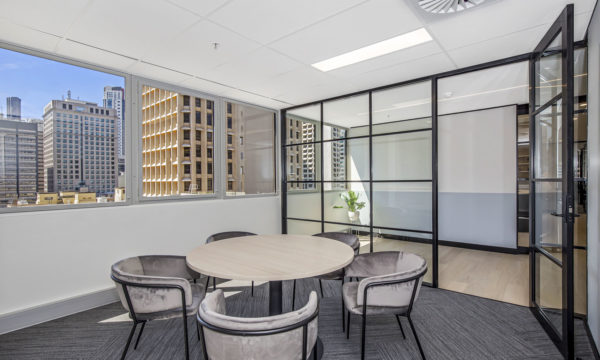
Size, Fit out, Budget
Size, Fit out, Budget
Review your current office as a starting point and decide what changes you would make in your new space. Next, head to Caden’s Office Space Calculator to get an idea of how much space your business needs. Our Suites pages also have a Rent Calculator to estimate your rent based on your lease term — the rule of thumb is you pay a higher rate for flexibility, with longer leases being more cost-effective, but not as flexible. The table below guides you through the type of space you can expect to procure, based on your preferred lease term.
Lease Term
Condition of Office Space
1 - 2 years
Existing fit outs and some spec fit outs. Most often, a 1-to-2-year lease term is not long enough for a building owner to justify leasing a spec fit out.
3 years
Existing fit outs and spec fit outs. A critical juncture – many landlords will seek to lease spec fit outs on 3-year lease minimum, with some holding out for a 5-year lease.
4 - 5 years
Unfitted spaces, existing fit outs and spec fit outs. A longer lease can open the door for you to have a custom fit out, as the incentive pool becomes significant enough to cover the cost, along with the rental abatement over the longer term.
Over 5 years
Unfitted spaces, existing fit outs and spec fit outs. Going beyond a 5-year lease does not, typically, improve your range of opportunities unless you are a larger occupier (>500sqm). Extending the lease term will increase the volume of incentive that can be applied as an abatement to the rent.
Review Caden’s FAQ page at this stage of your process to ensure you are familiar with terminology and leasing expectations, and access these links for additional information:
- ‘Your Brief – Getting it Right Up Front’
- Fit out Guide
- ‘Incentives – How Do They Work?’
- Knowing What To Spend
Search for relevant office spaces
Search for relevant office spaces
Use Caden’s Search Tool to find vacant tenancies for your size and budget. It’s worth opening up your search parameters in both size and cost, to challenge your own thoughts and expectations.
Caden’s article on fit outs will help you get a feel for what your preferred condition of space may be (unfitted; existing fit out; spec fit out).
Inspect your favourite properties
Inspect your favourite properties
With a list of appropriate office options, it’s time to run some inspections — a critical part of the search, as they will give you the best feel for size, value, and the difference between what you think might work on a floorplan and what works in reality, along with an insight into the location.
It is common to to view a handful of properties at once, before shortlisting a few favourites and inspecting them a second time. For tips on questions to ask your agent about an inspection, see our article here.
Ask for an offer from the landlord and negotiate terms with your Caden agent before paying the deposit
Ask for an offer from the landlord and negotiate terms with your Caden agent before paying the deposit
With your preferred office options decided, it’s time to ask for an Offer to Lease —prepared by the landlord, these are not legally binding and set a platform for terms to be negotiated, prior to engaging solicitors. They will include the landlord’s standard terms for the building and the commercial terms (see Caden’s Glossary of Terms for help with this).
Once finalised, you will be expected to pay a deposit of one (1) month’s rent, whereupon the landlord will instruct their solicitor to prepare the formal lease documentation.
Sign lease documents, provide the bank guarantee and insurances, and move in
Sign lease documents, provide the bank guarantee and insurances, and move in
The final step is to execute all formal documentation. Your solicitor will help review the lease documentation and your bank and insurer will know what is required to prepare the bank guarantee and Certificates of Insurance.


Ships To Sail Into 40 Creek St
Tenant Name: ANL
Industry: Shipping
Previous Location: 110 Eagle St
Space Required: 230m2 – 250m2
Company Description
ANL is Australia’s leading container shipping company, employing approximately 200 staff throughout the nation. ANL is part of the CMA CGM Group, a worldwide shipping group, and offers shipping services to all major destinations in Oceania, from New Zealand and Papua New Guinea to the Pacific Islands, with extensive coverage throughout Asia, the West Coast of America and the Indian Subcontinent. Visit anl.com.auPerformance Metrics - How did we help?
- Metric 1 37.77% improvement in overall space efficiency
- Metric 2 30% + reduction in overall office occupancy costs
- Metric 3 New fit out design assists in developing team culture


